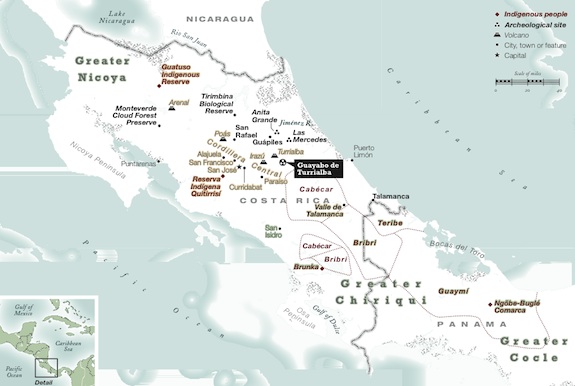PHOTOS: Rarely Seen Central American Ceramics Dating from 1,000 Years Ago
Animal forms, human figures and abstract designs all provide valuable information about the diverse cultures of the region
![]()

Both male and female figures were portrayed with body art and tattoos, but females were typically shown with the decoration covering their shoulders and chest. In addition, her seated posture indicates she is of an elevated social status. Greater Nicoya female figure on a feline-effigy bench, AD 800–1200 Linea Vieja area, Costa Rica Pottery. All photos by Ernest Amoroso, courtesy of the American Indian Museum
Thousands of years old, the ceramics of Central America tell us a great deal about the societies who made them. Religious beliefs, gender dynamics, societal hierarchies–all of this lies encoded in the sculptural and pictorial choices of the people who made the more than 160 objects that comprise the American Indian Museum’s new exhibition, “Cerámica de los Ancestros: Central America’s Past Revealed,” opening March 29 in Washington, D.C.
Sponsored by both the museum and the Smithsonian’s Latino Center, the new bilingual exhibition is supported by more than two years of research and a thorough investigation of the American Indian Museum’s archaeological collections, some 12,000 pieces from the region, many of which have never been displayed in public. The show seeks to display the diversity of not only the objects, but also the cultures of Central America, and showcases 160 works crafted from gold, jade, copper, marble, shell and stone and dating from 1,000 B.C. to the present.
Kevin Gover, the museum’s director and Eduardo Díaz, the director of the Latino Center, write that the materials, “testify to the complexity of long-lived governments and social systems, and to the importance and sophistication of the art and science in the communities where they were made. They speak of the patience, sensitivity, and innovation of their makers.”

The exhibit covers seven major archeological regions, including Greater Nicoya, Central Caribbean, Greater Chiriquí and Greater Coclé.

While some pieces, particularly from the Maya, took on an abstracted quality, this pre-classic human-monkey figure shows a turn toward realism. Pre-Classic period Maya human-monkey figure, AD 200–300 Villa de Zaragoza, Chimaltenango Department, Guatemala Pottery

Jade and gold works round out the exhibit and show how artists worked across materials. Using a material like gold in Panama, even if locally produced, often signaled an exposure and knowledge of outside cultures, bolstering the owner’s authority. Greater Coclé pendant with warrior figures, AD 500–1200 Península de Azuero, Herrera Province, Panama

This elaborate piece of pottery is actually a musical instrument. Classic period Maya whistle representing a seated woman, AD 600–900 Quiché Department, Guatemala Pottery

Many ceramics were made by and for households but larger societies could support specialists. Greater Nicoya female figure from AD 800–1350 Near Rivas, Rivas Department, Nicaragua Pottery. Photo by Ernest Amoroso

A fearsome god of fire provides a contrast to the vessel’s likely contents. Heavy incisions carve the figure’s face into the surface in contrast to additive works which build form up from the surface. Lempa River vessel depicting the god of fire, AD 900–1200 San Salvador Department, El Salvador Pottery

The tripod form was a common one for vessels but here the artist plays with the form to help enhance the animal’s figure. Greater Nicoya tripod vessel in the form of an agouti, AD 1000–1350 Nicoya, Guanacaste Province, Costa Rica Pottery

Drawing inspiration from the wildlife around them, Greater Nicoya artists incorporated figures like the crocodile into their work. Greater Nicoya crocodile jar, AD 1000–1350 Filadelfia, Guanacaste Province, Costa Rica Pottery.
The exhibition will be open through February 1, 2015 at the American Indian Museum.
/https://tf-cmsv2-smithsonianmag-media.s3.amazonaws.com/accounts/headshot/Leah-Binkovitz-240.jpg)
/https://tf-cmsv2-smithsonianmag-media.s3.amazonaws.com/accounts/headshot/Leah-Binkovitz-240.jpg)